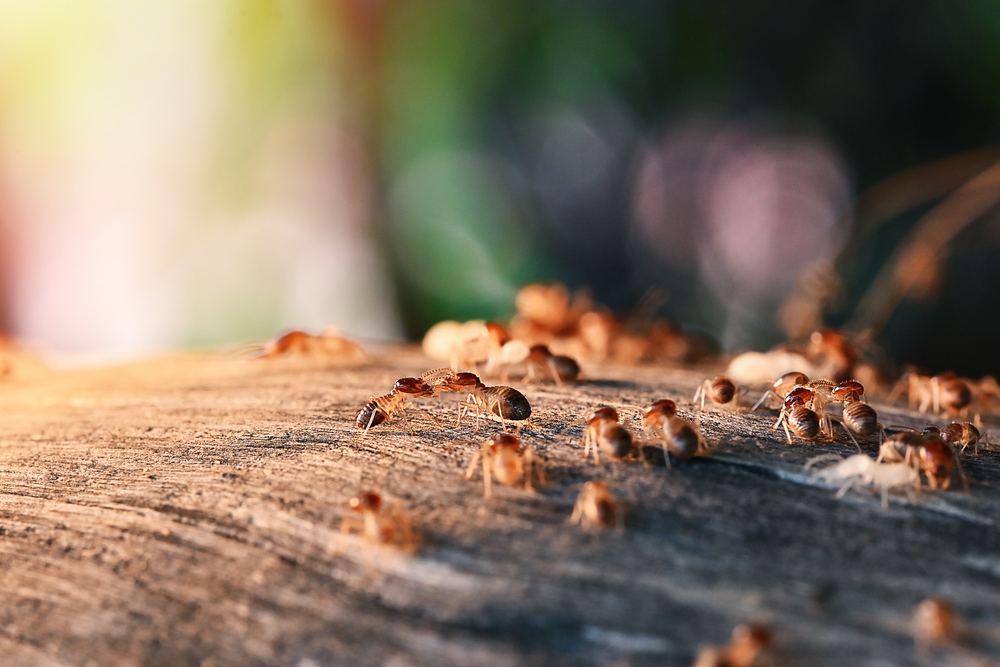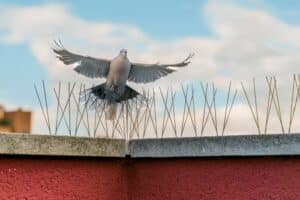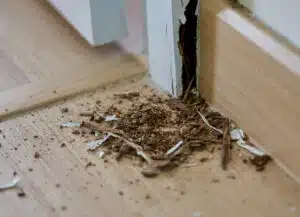As we get ready to enter the hottest period of the year in Utah, we’re already well into a “season” that pest control experts around the state and country are quite familiar with: Termite swarming season. This is a long period, usually five to six months, and starts at the end of winter — what does it entail, and how should home and building owners be prepared for it?
At A-1 Exterminators, we’re proud to offer the very best termite inspections, termite treatments and other related services to ensure your home or building is not impacted by these potentially damaging pests. Even if you’ve never dealt with a termite infestation before, and especially if you have, it pays to know about termite swarms and how to ensure you’re prepared for one if it takes place. Here are some basics and steps.
Termite Swarm Basics
As the name indicates, a termite swarm refers to a mass gathering or “swarm” of winged termites. These are generally young, reproductive termites (i.e., future queens and kings) that have left their home colonies in order to mate and create new ones. These winged termites are also known as alates, for those interested in the technical terminology.
Most swarms occur during the spring and summer months, although they can technically happen any time of year. They will typically contain dozens or even hundreds of termites, and while it may look impressive or even alarming, a termite swarm in and of itself is not generally cause for alarm. However, it’s important to take note of any swarms that do occur, as they can indicate an infestation on your property that will need to be dealt with by professional exterminators.
How Termite Swarms Will Look
These termites, or alates, will generally be about an inch long. They are dark in color, with two pairs of wings that are identical in size.
As some may note, this is relatively similar to some flying ants — but there are a few telltale signs that can help you distinguish between the two. First, termites’ wings will be narrower in proportion to their bodies than flying ants. Additionally, when viewed from above, a termite’s wings will appear to be of equal size and shape, while a flying ant’s will not.
Finally, while both insects have narrow waists, a termite’s will be significantly wider than a flying ant’s. If you see what you think may be a termite swarm, it’s best to contact professional exterminators as soon as possible for assistance in identifying the insects and dealing with them accordingly.
What Causes Termite Swarms?
The most common reason behind a termite swarm is relatively simple: The colony is in need of expansion and new food sources. As the colony grows, it becomes more difficult to support all of the termites within it. The soil around the colony also begins to dry out and deteriorate, making it harder for the termites to find food.
In response to these conditions, the colony will produce winged alates that will leave in order to mate and create new colonies. These alates will shed their wings after a short time and become the new kings and queens of the colony, continuing the process anew.
While this is the most common reason for a termite swarm, there are other potential causes as well. If a colony is disturbed or damaged, for example, this can also spur them into action. Swarms can also be brought on by changes in temperature or barometric pressure, as well as other environmental factors.
Termite Swarm Timing
The precise length and frequency of termite swarm season will depend on the specific species of termite in question. In general, however, most swarms will occur sometime between February and August.
As noted above, the specific timing of a termite swarm will generally be related to the needs of the colony. For example, if a colony is particularly large or has been damaged, they may produce multiple swarms over the course of a single season. Generally speaking, though, most healthy colonies will only need to relocate about once per year.
Additionally, the specific geographical location will also play a role in when swarms are most likely to occur. In general, southern states will see termite activity earlier in the year, while northern states will see it later. This is due to simple differences in temperature — termites are cold-blooded, and therefore do not fair well in colder climates.
How to Prepare for Termite Swarms
While some may be looking for a “prevention” section here, there’s really no use for one — termite swarms can’t really be stopped from happening. What you absolutely can do, however, is ensure your property is prepared in case one takes place.
Here are some methods that will help you be sure a termite swarm in your area doesn’t lead to a termite infestation in your home:
- Limit wood-to-soil contact on the property: One of the primary ways that termites gain access to a home is by tunneling through wood that is in contact with the ground. Be sure to regularly check eaves, porches, and decks for any wood that may be touching the soil. If you find any, make sure to either remove it or raise it up so that it no longer has contact.
- Remove any potential termite food sources: While most people think of wood when they think of termites, the insects are actually quite fond of other materials as well. This includes paper, fabrics made from natural fibers, and even insulation. Be sure to keep all of these materials away from the exterior of your home, as this will limit their presence.
- Repair cracks, crevices and gutters: These are all potential entry points for termites, so it’s important to make sure they’re all in good repair. Be sure to regularly inspect your gutters and downspouts for any blockages or leaks, as these can also lead to wood damage that termites can exploit.
With the right basic preparation, a termite swarm in your area shouldn’t be a major cause for concern. For more on termite infestation prevention or any of our other pest control solutions, speak to the team at A-1 Exterminators today.



